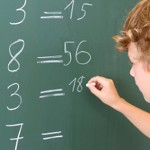Fractions, Decimals and Percentages Worksheet and Explanation
We’ve structured this information to help children with their education. It is targetted at children in years 5 and 6 and the questions for the worksheet have been stripped from past papers. Having an understanding of fractions, decimals and percentages is part of the primary school curriculum and children will deal with fractions, decimals and percentages in both KS1 and KS2.
The Information below will give an overview of the topic and we have included a detailed worksheet with full answers. The worksheet includes 52 fractions, decimals and percentages questions and is relevant for KS2 pupils approaching their SATS test.
Download Free Fractions, Decimals and Percentages Worksheet – Questions
Download Free Fractions, Decimals and Percentages Worksheet – Answers
If you are not ready to download the worksheets yet, then read on for some information about fractions, decimals and percentages. This has provided to introduce the topics covered in the worksheet for those that might be unfamiliar but also as a quick revision tool for those that would like a quick refresher before accessing the worksheet.
Fractions, Decimals and Percentages Explained
Introduction
Decimals is arguably one of the most difficult and length parts of the primary curriculum as it demands its own set of mathematical rules, links into other concepts in maths and is interchangeable with both fractions and percentages. Building upon the visualisation of decimals introduced at the start of KS2 children will be expected to calculate decimals by the end of year 6.
Fractions Explanation
Although related to decimals, the concept of a fraction is relatively more easily visualised and so the topic is discussed earlier on in the curriculum – usually through the medium of pies. As an example, if I start with a whole pie, or 1, and then end up eating half the pie, I will be left with ½. This visualisation can similarly be used for other fractions.
Now we have introduced what a fraction is we can explain them in a little bit more detail as well as other concepts children will be made aware of. A fraction consists of a number on the top of the fraction (the numerator) and a number of the bottom (the denominator), using ½ as an example we can express this as 1 out of 2, so if the denominator is the whole and the numerator is how many we have of that whole, we can see that we have 1 out of our whole 2, or we have half.
Equivalence follows on from this. Equivalence explains why ½ is equal to 2/4 and 4/8 etc. and how fractions can be simplified into their simplest form by dividing both the numerator and the denominator by the same amount.
Decimals Explained
A decimal is a way of expressing a non-whole number. Decimals are often a number between two whole numbers and are expressed in a scale of tens. For example, 10.4 is between 10 and 11. It is 0.4 more than 10 and 0.6 less than 11. This is most easily visualised by the number line, similar to the ones used to introduce the concepts of addition and subtraction. Here we know that the difference between 10 and 11 is 1, but we can break this down into smaller chunks of 0.1 by splitting 1 into 10 smaller parts. So, using this if we count 4 of the smaller chunks between 10 and 11 we go: 10, 10.1, 10.2, 10.3 and 10.4.
Building on these basics children will learn about:
- Tenths, hundredths and thousandths and how we can divide or multiply by 10 to move right or left, respectively.
- Rounding to the nearest whole number and how we always round 10.5 upwards.
- Using partition methods to correctly add decimals
- How decimals can be similarly used to measurements and money.
- ordering decimals correctly
Percentages Explained
A percentage (%) is an expression per hundred. For example if a bus has 100 seats and 80 people get on the bus and sit down, the bus would be 80% full. Similarly to fractions this is most easily visualised and fractions can be interchanged to decimals through multiplication and division by 100.
Please feel free to download the fractions, decimals and percentages worksheet and answers. No registration is necessary.






